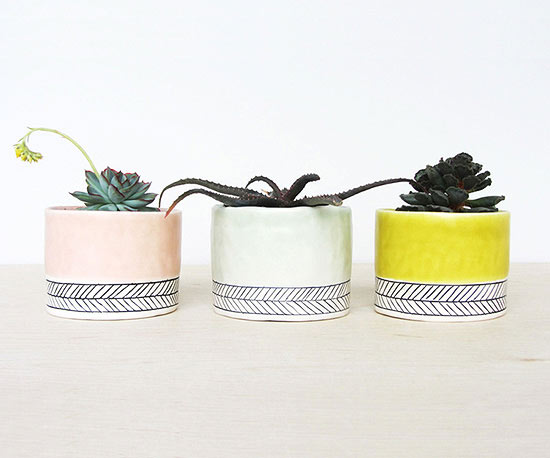






Gnats in houseplants are annoying. Known as fungus gnats, they are actually small flies, about 1/8-inch long, that are drawn to moist potting soil and decaying plant material at the base of houseplants. While they look similar to mosquitoes, they don't bite.
Gnats in houseplants typically result when potting soil contains too much moisture.
Read our full houseplant care guide.
Fungus gnats lay eggs in the houseplant soil. The eggs become larvae, which feed on fungi in the soil of plants, hence their name. The fungus gnat larvae are around 1/4-inch long with a shiny black head and an elongated, whitish to transparent body. In addition to fungi, they also like organic matter and will sometimes eat plant roots or seedlings, leaving plants wilted. A slime trail that looks like traces of slugs or snails across the top of the soil is another telltale sign there are gnats in your houseplants. The gnats also like light, so you may notice them on your windows, particularly if houseplants are nearby.
The first indication of gnats in houseplants is a sign to take action. While it may be tempting to spray the adult fungus gnat, that's often a short-term fix. More adults will appear from the larvae in the soil. A better approach is to target the larval stage of their life cycle. Because gnats lay their eggs in the moist soil around houseplants, reducing excess moisture is a key to getting rid of these nuisances. Avoid overwatering your houseplants and make sure they have good drainage. Allow the soil to dry between regular watering -- not to the point that your plant begins wilting but enough that the soil isn't continually moist. The eggs and larvae usually die in dry soil. Remember to drain any excess water that may have accumulated in saucers.
See the best low-maintenance houseplants.
If drying out soil does not seem to help, you might try a product such as Gnat Stix, which are yellow sticky traps. Place the trap near your plants to trap the adults and thereby reduce the number of eggs the fungus gnats lay. Be careful to avoid touching the plant leaves with the sticky paper. Check the traps every few days and replace when they become covered with gnats.
Fungus gnats are often more noticeable in the fall. It may be that they hitchhike on houseplants when they are brought indoors at the end of summer. Before bringing plants inside, check them to make sure they are free of insects. Before you purchase new plants, examine them to make sure there are no insect infestations. Use a sterile potting mix when planting or repotting.
Download our free chart on preventing and tackling houseplant problems.
Copyright © www.100flowers.win Botanic Garden All Rights Reserved